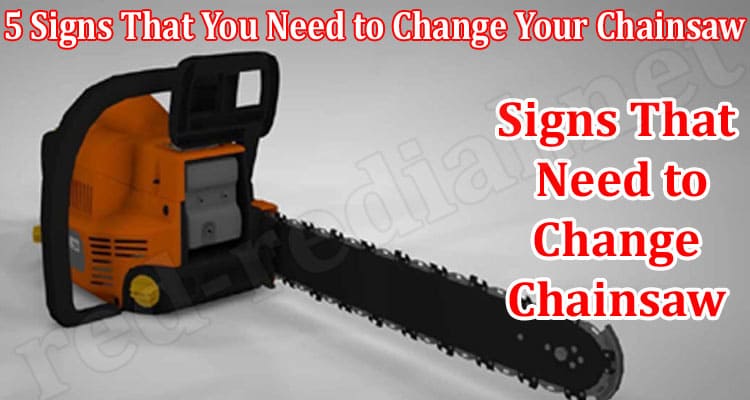5 Signs That You Need to Change Your Chainsaw
5 Signs That You Need to Change Your Chainsaw: If your trusty chainsaw is showing signs of wear, it’s essential that you make the necessary repairs or invest in a new model. Operating a faulty chainsaw can be extremely dangerous, not to mention inefficient when it comes to cutting. Let’s take a closer look at 5 classic indicators that your chainsaw needs upgrading:
Damaged bar
The tell-tale signs of a worn-out chainsaw bar include dull, slow, crooked and inaccurate cuts, an obvious no-no for any saw. The best way to check whether your bar is worn or damaged is to press a straight edge against the bar and an outside tooth of the saw – if they don’t line up against the straight edge and there is no gap between the two, your bar is most likely damaged.
Chain tension
A typical symptom of a chainsaw that may need to be repaired or changed is improper chain tension, which usually includes chains resting too loosely on/off the bar. Similarly, if your chain is biting or you can feel an abnormal pull as you cut, the chain tension could be too great. It’s worth noting that loose chains can also be attributed to incorrect setting and variations in temperature, so try readjusting the tension manually before you give up hope.
Feeling unbalanced
Crooked or unbalanced cutting can occur for a number of reasons, the most common being a dull chain or damaged/uneven bar edges. If sharpening the chain or manually filing the bar edges doesn’t help to restore some balance to your chainsaw, it could be time for an upgrade.
Jammed bar nose sprocket
If you feel like your chainsaw is stuttering or skipping, this could be down to a jammed bar nose sprocket. While chain/sprocket jamming can often occur due to debris being lodged in the sprocket during cutting, a sprocket that regularly jams could be an indicator of a more serious problem with your chainsaw. Unfortunately, most chainsaw drive sprockets will need to be changed after they have worn out two chains, or once they’ve sustained damage. The most common types of chainsaw sprockets include rim & sprockets, sprocket bearings and spur sprockets, so make sure you get the right type if you’re getting a replacement part.
Replacing your chainsaw
If your chainsaw is exhibiting any of the problems above, never fear. While it’s unsafe to use a faulty chainsaw (or attempt to repair it if you don’t have the expertise), it is incredibly easy to find a replacement online, whether you’re shopping for a new electric saw, gas saw, pruning saw, full chisel, semi-chisel or low profile chainsaw.




